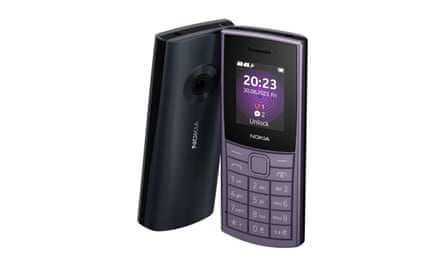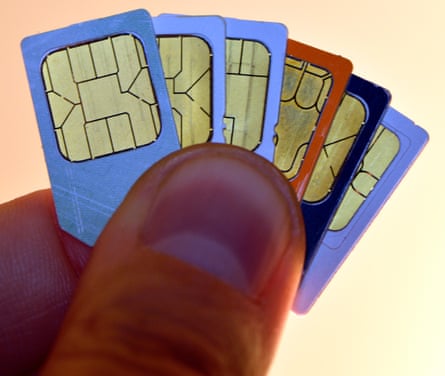If you have decided it is time for your child to have their first mobile phone, or they are due an upgrade, the choice can be bewildering.
There are various things to consider, from the handset and the mobile service to go with it, to parental controls and how well the phone fits in with the devices you already use.
A hand-me-down
The best option might be the phone you have in your hand, particularly if you are hoping to replace it. With a little bit of cleaning, a new battery and a decent case, it might be just the ticket for your child, as long as it still has software support.
Battery replacements typically cost £50 to £100 depending on the model, and your familiarity with it will make it easier to wipe and set up for your child.
A basic phone
If the handset is only for access to calls and texts for arranging pickups and emergency contacts, then a basic “dumb” phone is the answer. Nokia makes a range of feature phones such as the 110 and 225 that cost about £20 to £50. Whichever model you choose, make sure it supports 4G, as 3G services in the UK are gradually being switched off over the next few years.

Budget Android
A budget Android phone could be a good starting point. There are a range of models at about the £80 to £150 mark that offer a solid experience. They won’t be fast but typically have large screens and decent battery life.
Avoid models running Android Go or without access to the Play Store and Google services. In terms of software support, check how long is left, which at that sort of price is typically only two to three years from the phone’s first release, not the point at which you buy it.
Make sure good cases are available for the phone, too, and some level of water resistance is probably a good idea.
Nokia has a range of Androids available and offers longer software support than many. The Nokia G22 costs about £130, has Android 12 with security updates until April 2026, basic water resistance, and can be repaired at home if something gets broken.

Motorola has some equally good-value offerings. The Moto G13 costs about £130 and has Android 13 with security updates until January 2026.
The Galaxy A14 might be a better choice if you are a Samsung family. It costs about £150, has Android 13 with security updates until January 2027, and more third-party case options but lacks any formal water resistance.
Google Pixel 6a

If you are looking for something better for an older child, Google’s Pixel 6a was a bargain in 2022 and is a steal at about £300 today. It offers 80% of the high-end phone experience with one of the best cameras you can get, top performance, solid battery life, proper water resistance, software updates until July 2027 and plenty of case options – there’s nothing budget about the 6a.
Apple iPhone
If you are an Apple family, your options are a bit more limited. The cheapest new iPhone is the 2022 iPhone SE at about £450, which offers a solid, if expensive, route into the Apple ecosystem.
Refurbished models may be more economical. The 2020 iPhone SE costs about £130 refurbished and will probably be supported with updates for at least three years. The base 64GB storage is a bit tight but the phone is water resistant, and there are buckets of third-party cases available. A battery service from Apple for it costs £69, should that be required.
For newer models with Face ID and longer support, the iPhone 12 mini at about £300 or the regular-sized iPhone 12 at about £320 refurbished might be good options.
Network service
With the right handset selected, next comes a choice of phone service. Most of the networks block 18-plus content by default over the mobile connection but some offer more advanced controls on top, so it is worth checking they do what you need.
The cheapest starter option is a pay-as-you-go (PAYG) sim card. All the large networks provide them, although some, such as O2’s giffgaff, specialise in providing better-value packs or bundles of minutes, texts and data that you buy for a month at a time.
Check the network coverage around you before deciding. PAYG sims are usually free, so you can always test them out first if you live in a weak signal area.
For heavier users, PAYG is typically more expensive than a contract but you can use managing credit, minutes, texts and data to teach financial responsibility. And once the credit runs out, there’s no chance of bill shock.

Meanwhile, a sim-only plan typically includes an allowance of minutes, texts and data on a rolling monthly, yearly or longer basis. Monthly contracts provide greater flexibility to change things but are usually a little more expensive.
The best-value deals can typically be found with the smaller virtual networks such as Tesco, Asda, iD Mobile or Smarty, with many to choose from. Check the coverage is right for your area. Most will allow you to set spending caps and block premium-rate texts and third-party charges to avoid bill shock.
Then there are family plans. If your family already uses one particular network for their phones, adding another line to your existing plan can be cost-effective and easy to manage with one bill. Most of the big networks provide discounts for additional lines, while some, such as EE, allow you share data from your plan with other sims on an ad hoc basis.
While some parental controls are available on all networks, if you need something stronger, ParentShield from Derby-based Engine Mobile promises a “child-safe” network by providing extensive tools. These include allowing parents to read all texts, record all calls, set alerts for concerning words or phrases in messages and block all premium-rate services.
The plans are typically more expensive, starting at about £10 a month, and won’t help restrict content while the phone is on wifi but could be a good solution.
Under 13: they need a child account
Apple and Google provide the ability to create child accounts for those under 13 years old that are linked to your own account, allowing them to use an iPhone or Android device.
Which one you create will probably be based on which platform you use as the parent. For example, if you use an Android phone with a Google account, it will be much easier to manage your child’s usage as part of your family account.
Parental controls

Even if your child is old enough to have their own account on their phone, you can apply various parental controls on either an Android phone or iPhone at setup by connecting it to your account or a family account.
Both platforms can set screen time limits, block certain apps, limit age-appropriate content in the app store, put limits on permissions such as access to the camera, and allow you to track their location.
It is worth having a dig through Apple’s parental controls and Google’s Family Link guides to get the settings right.

